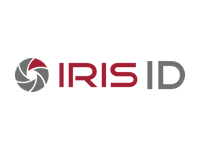Biometrics is the use of people’s unique biological characteristics to identify and authenticate individuals. It’s considered to be the most reliable and efficient way for ID authentication. Unique identifiers include fingerprints, hand geometry, face geometry, retina and iris patterns and voice waves.
Current trends in Biometrics:
With increasing threats from identity fraud and theft and new threats such as terrorism, new and advanced technology solutions are required and being implemented.
Biometrics has established itself as one of the most pertinent means of identification and authentication. It is being rolled out across many different sectors including governmental, travel, education, corporate and financial.
Although there is some reluctance and public acceptance, the increase in accuracy and security has meant it is becoming more publicly accepted. This has meant that it is being rolled out across industries and applications faster than ever before.
Typical use cases where biometric technologies are used:
- Law enforcement and public security (criminal/suspect identification)
- Military (enemy/ally identification)
- Border, travel, and migration control (traveller/migrant/passenger identification)
- Civil identification (citizen/resident/voter identification)
- Healthcare and subsidies (patient/beneficiary/healthcare professional identification)
- Physical and logical access (owner/user/employee/contractor/partner identification)
- Commercial applications (consumer/customer identification)
- Commercial buildings
Types of Biometric Identification
The oldest form of biometric verification is fingerprinting. Historians have found examples of thumbprints being used in ancient China as a means of unique identification on clay. Many law enforcement organisations have been using ink fingerprint identification for many decades. However, more recently Biometric verification has advanced considerably with computerized databases and the digitalising of analogue data.
Iris and retina biometrics was the next biometric methods to become more widely utilised. Iris identification became popular in the financial sector. More recently Facial and hand geometry has been the emerging technology and more widely used. An example of such technology is the iDemia MorphoWave Compact which uses hand geometry for identification. Facial-recognition technology has been used by law enforcement alongside CCTV for some time now to pick out individuals, however, more recently it is being used across different industries including mobile phones.
AI and Voice recognition is the most recent advancement in biometric identification. This method is being rolled out more in the commercial sector for consumers across many different applications and is becoming increasingly popular.
How are Biometrics used?
No matter what biometric methodology is used, the identification and authentication process remains the same. A record of a person’s unique characteristic is captured and kept in a database or locally on a device. When identification and verification are needed, a new record is captured and compared with the previous record in the database/device. If the data in the new record matches that in the database record, the person’s identity is confirmed.


















